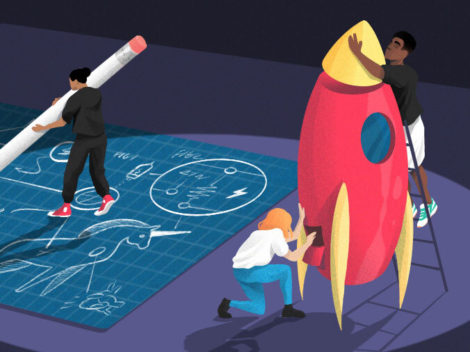Morning Markets: This morning let’s examine the global and domestic venture markets, taking extra care to track which stages are attracting more, or less capital.
The Crunchbase News team is hard at work with our Q3 2019 venture capital report (you can keep tabs here if you’d like), parts of which we’ve already published, including our looks at the global venture market, and the combined American and Canadian market.
Subscribe to the Crunchbase Daily
The data is largely positive. Some figures (like global venture dollar volume) were down when compared to their year-ago results, but there’s plenty of strength to be found in the results. Let’s highlight some high-and-low-lights as we head into the fourth quarter of 2019, and, soon, 2020.
Notable Results
Re-reading the data this morning, I noticed that there was something interesting happening with seed-stage investing, early-stage investing, and late-stage investing. So, it makes sense to quickly touch on each of the three main stages, emphasizing what was eye-catching from each tranche of the global venture market.
We’ll relate our global notes to what happened closer to home at the end. That said, let’s examine each stage, starting with the earliest:
- Seed: As our own Jason D. Rowley wrote, Q3 2019 “brought a veritable explosion in angel and seed-stage dealing,” including a projected $4.44 billion in capital invested at the stage across just under 6,000 rounds. That second tally works out to nearly two-thirds of all rounds in the quarter. Despite risk warnings flaring up around the world (politics, trade, economic data, etc.), the global Seed market appears to be in a risk-on position. That’s to say that even this late in the current global expansion, there’s plenty of optimism for early-stage, high-growth private companies that will take years to mature and produce returns.
- Early Stage: If Seed had a great quarter in terms of deal volume, early-stage investing had the opposite. Early-stage deal volume, according to our global report, “declined quarter-over-quarter and year-over-year” while dollars invested in the space rose over both time frames. So, we’re seeing more large early-stage deals but fewer of them. This trend contrasts with Seed’s Q3, which saw deal volume growth. If the two patterns hold, for reference, we could see a number of Seed-stage companies hoping to raise a Series A or Series B round (the two main investments that comprise the early-stage market) fail to do so in the future.
- Late Stage: In contrast to the early-stage market, late-stage investing grew in Q3, according to Crunchbase projections, by putting up more deal and dollar volume than it did a year ago. Q3 2019’s late-stage result is dwarfed by Q4 2018’s own, mind, and its gains over Q3 2018 in terms of dollar volume in percent terms were puny. But, still, an up quarter is an up quarter. Late-stage deal volume grew more (9.4 percent) compared to its year-ago quarter while dollar volume grew less (3 percent), leaving the average and median round sizes for the stage somewhat flat. For early-stage companies, this late-stage strength is likely welcome as it implies that the investors writing big checks are still doing so, and may keep at it when the younger companies need the capital.
All that is useful grounding for us as we keep tracking high-growth private companies, but let’s narrow a moment and look at Q3’s results that were generated closer to home.
Our report concerning the United States and Canada contains some data that match global trends. Namely that the Seed market for North American companies is also projected by Crunchbase to have been strong in Q3 2019, just as projections point to a soft early-stage venture market during the same time period.
The United States itself makes up a good-sized chunk of the global venture market, so to see its results match global tallies isn’t surprising. But as we’ve seen countries drive global venture data one direction only to surrender that same leadership later on, it’s not a certain thing that the United States’s venture market will track the world’s own. (For more on how quickly things can change, read this piece regarding China and the late-stage market.)
Taking a large step back, global and domestic venture results seem strong. Not record-setting, sure, but strong all the same. Mountains of money continue to move from the venture market into the world’s various startup ecosystems. So, while things may have been hotter here, or there, at some point in the past, I’d sum up by saying that the global and domestic venture markets were better than I expected in Q3.
How long that can last? I do not know. But we will know when 2020 starts if WeWork’s recent mess will cause any material harm.
Illustration: Dom Guzman

Stay up to date with recent funding rounds, acquisitions, and more with the Crunchbase Daily.






![Illustration of Harris and Trump: 2024 presidential election candidates. [Dom Guzman]](https://news.crunchbase.com/wp-content/uploads/Election-2024-300x168.jpg)


67.1K Followers